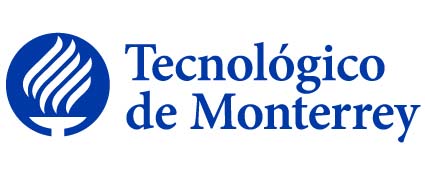
|
|||||
Disciplina asociada:Ciencias Básicas de la Medicina |
|||||
Escuela:
Medicina y Ciencias de la Salud
|
|||||
Departamento Académico:
Ciencias Básicas
|
|||||
Programas académicos: |
|||||
Requisitos:(Haber Aprobado MD1036) |
|||||
Equivalencia:No tiene. |
|||||
Intención del curso en el contexto general del plan de estudios: |
|||||
|
Es un curso a nivel básico, que tiene como intención que el estudiante describa la taxonomía, morfología, tamaño, estructura y reproducción de los diferentes microorganismos y parásitos presentes en el cuerpo humano, y que puedan afectar la salud del individúo. Que identifique los agentes etiológicos causales de enfermedades infecciosas y sentar las bases de la relación huésped-parásito para la mejor comprensión de la patogenia, epidemiología y diagnóstico etiológico de las mismas. Requiere de conocimientos de morfofisiología básica, biología y metabolismo celular. Como resultado de aprendizaje se espera que el alumno esquematice la relación huésped ? parásito y describa las manifestaciones que se pueden producir en el cuerpo humano, y aplique estos conocimientos a la solución de problemas de origen infeccioso que se pueden presentar en su actividad profesional. |
|||||
Objetivo general de la Unidad de Formación: |
|||||
| Al finalizar el curso el alumno será capaz de describir la taxonomía, morfología, tamaño, estructura y reproducción de los diferentes microorganismos y parásitos; asociar el tipo de microorganismo o parásito con el cuadro infeccioso; y de identificar las probables manifestaciones que puedan ocurrir en el cuerpo humano. Abarca las principales ramas de la microbiología que son: bacteriología, micología, virología y parasitología. | |||||
Técnica didáctica sugerida: |
|||||
| No especificado | |||||
Bibliografía sugerida: |
|||||
|
LIBROS DE TEXTO: * Tortora, Gerard J., Introducción a la microbiología, 9a ed., Buenos Aires ; México : Editorial Médica Panamericana, c2007, spaeng, 9789500607407 * Becerril, Marco Antonio., Parasitología médica , 2a ed., México : McGraw Hill, 2008, , 970106528X |
|||||
Perfil del Profesor: |
|||||
|
(600299)Médico Cirujano con Especialidad en algún campo de la Medicina ; (260102)Maestría en Ciencias Biomédicas ; (510501)Maestría en Ciencias Clínicas Dentales, General (MS, PhD) ; (260502)Maestría en Microbiología ; (600199)Médico Cirujano Dentista con Especialidad en algún campo de la Odontología ; (260102)Doctorado en Ciencias Biomédicas ; (510501)Doctorado en Ciencias Clínicas Dentales, General (MS, PhD) ; (260502)Doctorado en Microbiología CIP: 600299, 260102, 510501, 260502, 600199 |
|||||
|
|||||
Discipline:Basic Science for Medicine |
|||||
School:
Medicine and Health Sciences
|
|||||
Academic Department:
Basic Sciences
|
|||||
Programs: |
|||||
Prerequisites:( MD1036) |
|||||
Equivalences:None. |
|||||
Course intention within the general study plan context: |
|||||
|
This is a basic course which will train students to describe the taxonomy, morphology, size, structure, and reproduction of the various microorganisms and parasites present in the human body that can affect the health of the individual. Students will be able to identify the etiological agents of infectious disease and the foundations of the host-parasite relationship so that they have a better understanding of the pathogenesis, epidemiology, and etiological diagnosis of these diseases. This course requires previous knowledge in basic morphophysiology, biology, and cellular metabolism. The learning outcome for this course is that students schematize the host-parasite relationship and describe the manifestations that can be produced in the human body, applying this knowledge to the solution of problems of an infectious nature that they may later see in their professional activity. |
|||||
Course objective: |
|||||
| Upon completion of this course, students will be able to describe the taxonomy, morphology, size, structure and reproduction of various microorganisms and parasites; associate the type of microorganism or parasite with the infection; and identify the likely events that may occur in the human body, covering basic aspects of microbiology, mycology, virology and parasitology. | |||||
Teaching and learning tecniques: |
|||||
| Not Specified | |||||
Suggested Bibliography: |
|||||
|
TEXT BOOKS: * Tortora, Gerard J., Introducción a la microbiología, 9a ed., Buenos Aires ; México : Editorial Médica Panamericana, c2007, spaeng, 9789500607407 * Becerril, Marco Antonio., Parasitología médica , 2a ed., México : McGraw Hill, 2008, , 970106528X |
|||||
Academic credentials required to teach the course: |
|||||
|
(600299)Physician & Surgeon Surgeon Doctor with a specialty in some Medicine field and (260102)Master Degree in Biomedical Sciences and (510501)Master Degree in Dental Clinical Sciences, General (MS, PHD) and (260502)Master Degree in Microbiology and (600199)Medical and Surgical Dentist with Specialty in Dental Residency Program and (260102)Doctoral Degree in Biomedical Sciences and (510501)Doctoral Degree in Dental Clinical Sciences, General (MS, PHD) and (260502)Doctoral Degree in Microbiology CIP: 600299, 260102, 510501, 260502, 600199 |
|||||